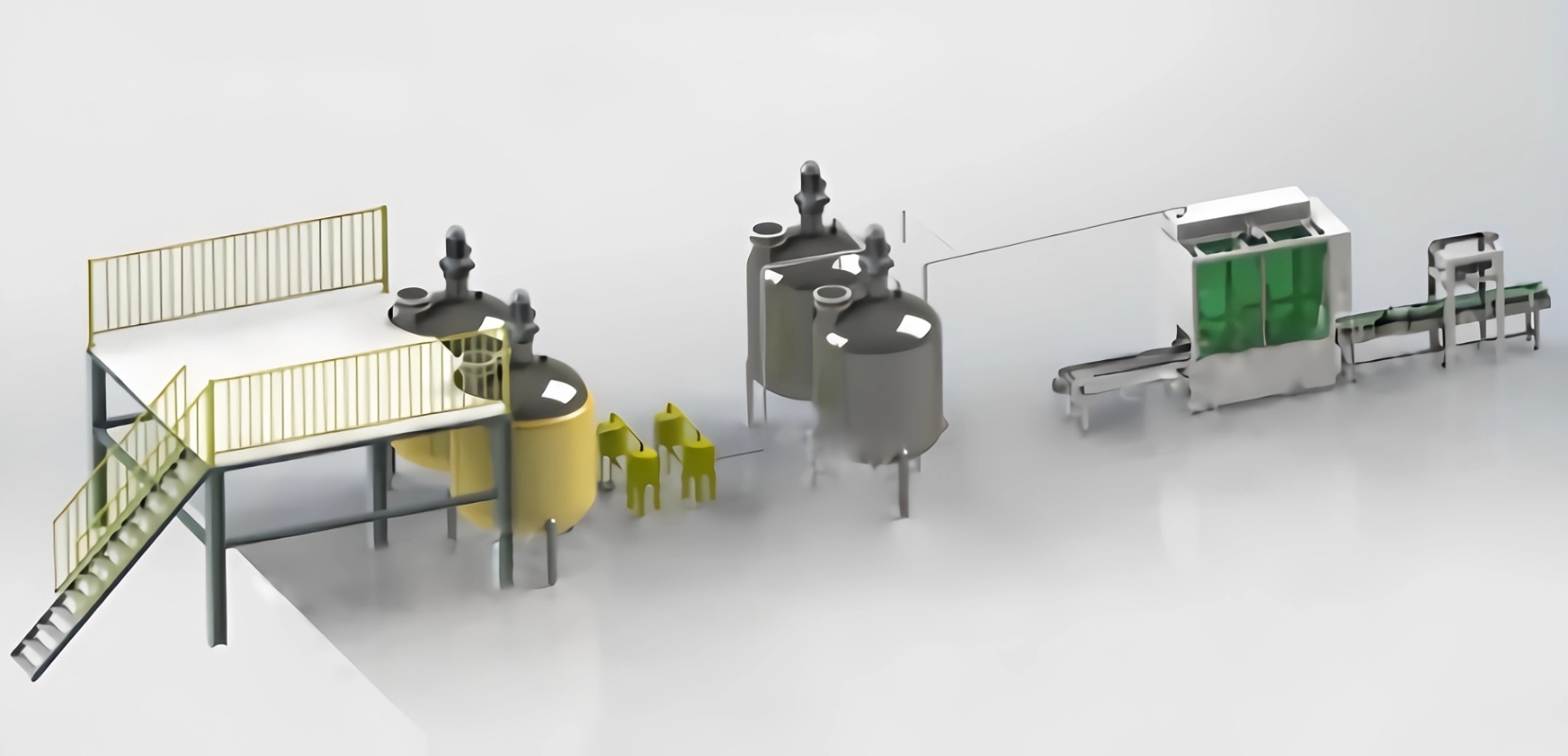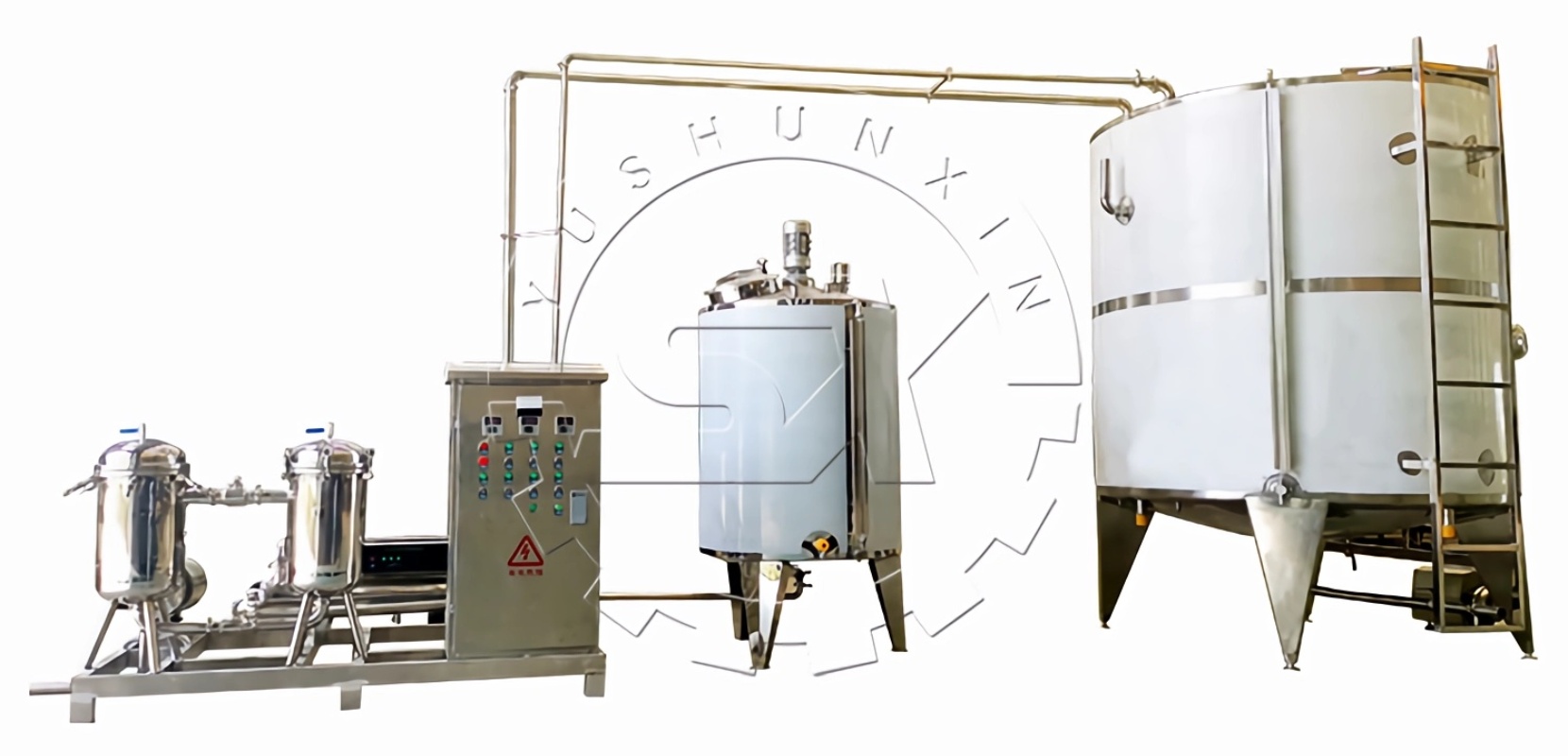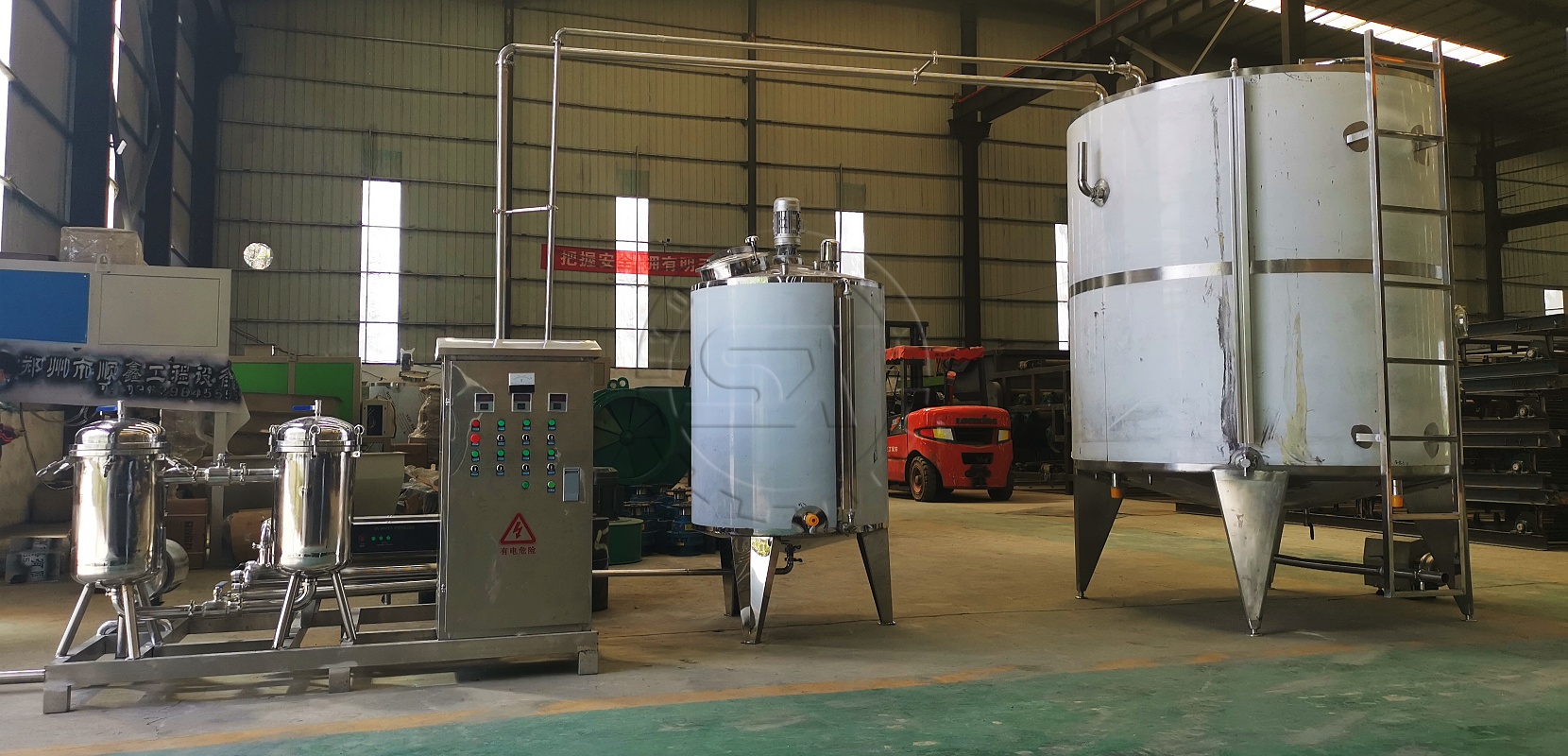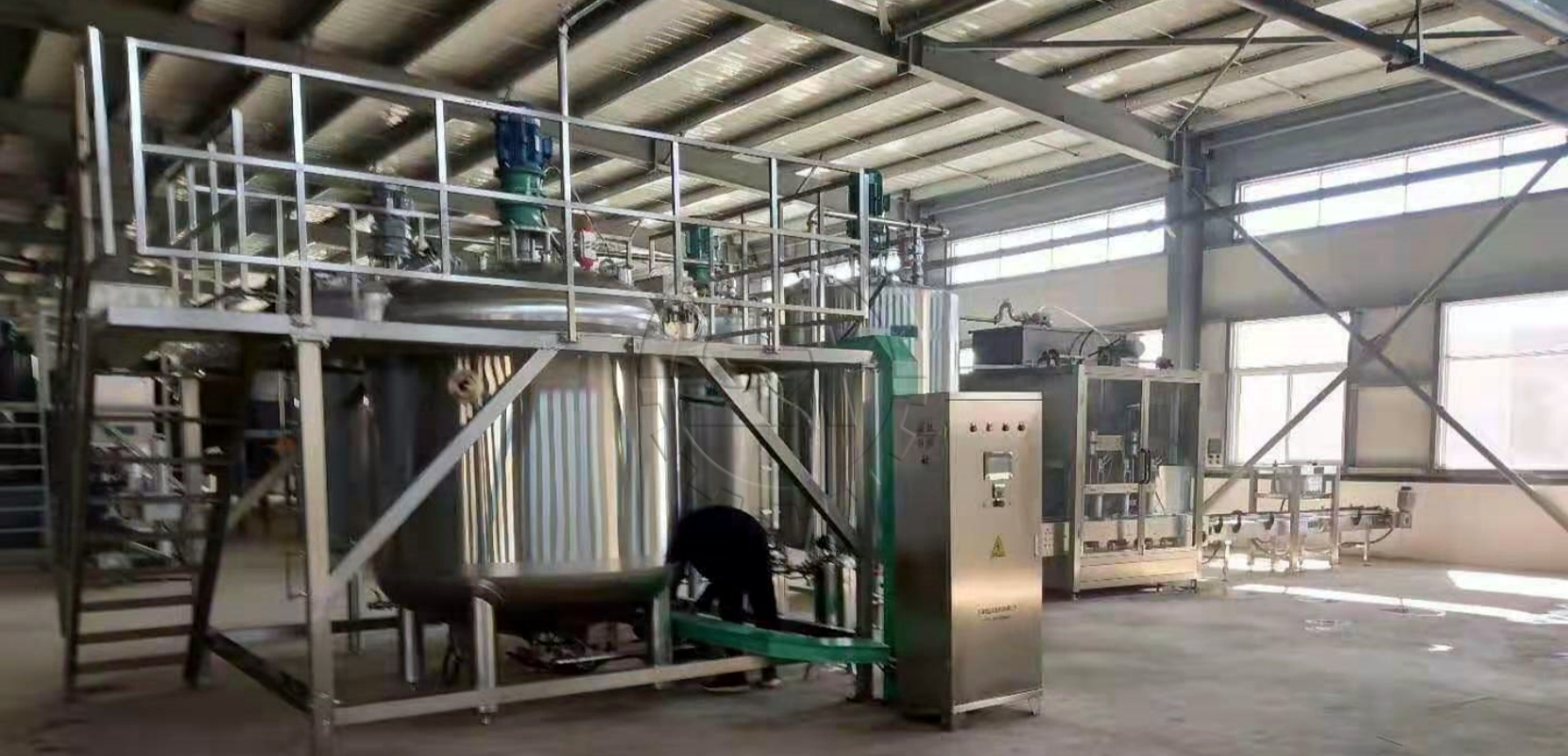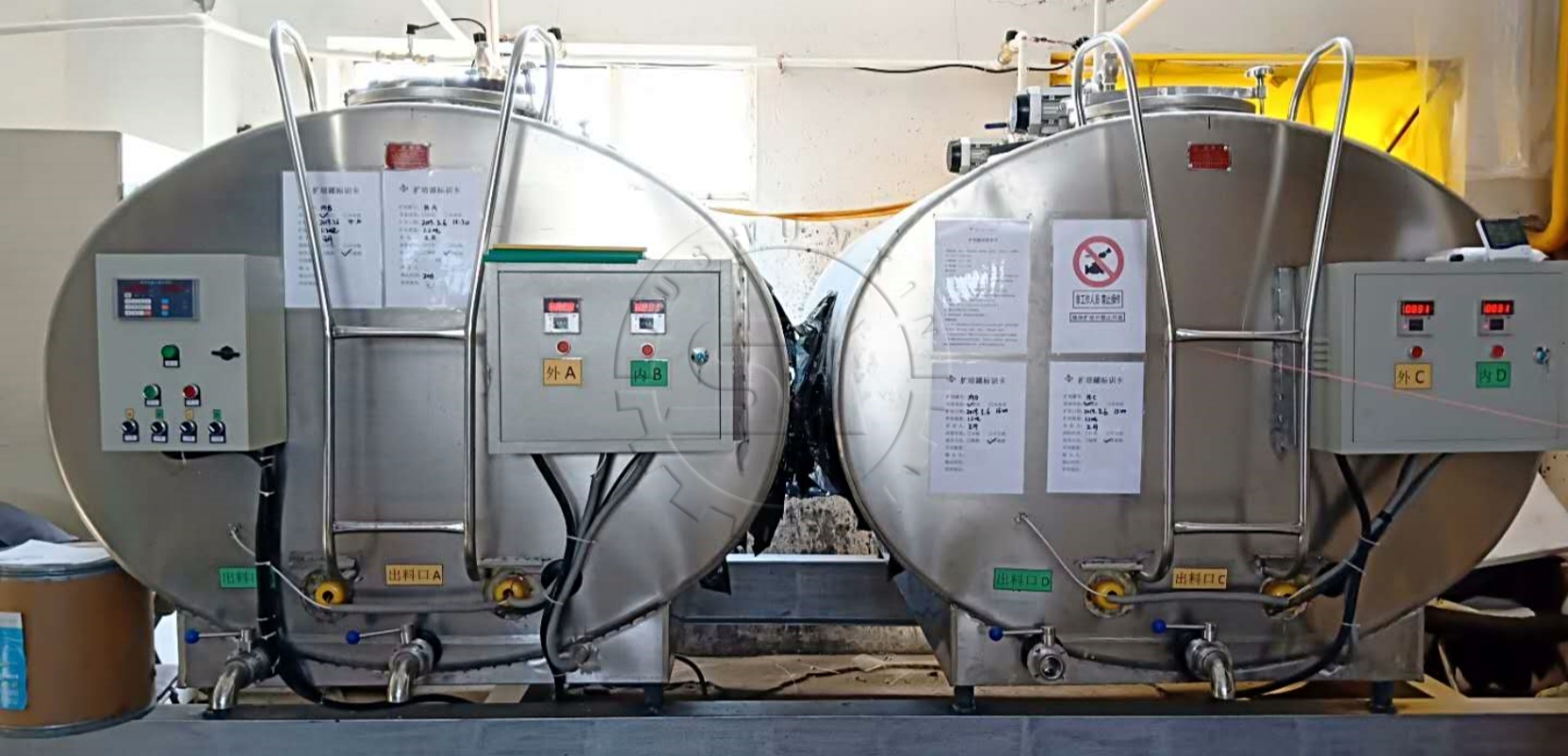Liquid Organic Fertilizer Manufacturing Process
Shunxin, as the leading organic fertilzer production equipment manufacturer, stands out as a paragon of innovation and hi-tech in China. In recent years, we sell our liquid fertilizer production line well at home and abroad. With specialized equipment at its core, our production line boasts essential components such as fermenters, reactors, filtration systems, and automatic filling machines. These components work seamlessly together to ensure the smooth and uninterrupted production of high-quality liquid organic fertilizers.
What Raw Materials Can You Use in Liquid Organic Fertilizer Production?
Liquid organic fertilizer production can utilize different raw materials. If you want to make clear liquid fertilizers, you may need the fermentation of organic waste, while producing suspended fertilizers, incorporating suspension agents is necessary. Thus, there are diverse sources to ensure a wide range of nutrient-rich options and meet specific agricultural needs.
What Are Main Raw Materials & Final Products in Liquid Organic Fertilizer Production?
Shunxin, a leading manufacturer of liquid fertilizer equipment, specializes in the production process design. Thus, applying heavily on these raw materials, you can use our equipment to make specific organic fertilizers, including seaweed fertilizer, amino acid fertilizer, and humic acid fertilizer.
Auxiliary Materials of Liquid Organic Fertilizer Processing
In addition to the primary raw materials, the manufacturing process of liquid organic fertilizers incorporates essential auxiliary materials. These include nutrient elements, microbial strains, and functional additives, which play a vital role in enriching the fertilizer’s nutrient content and enhancing its effectiveness. Let’s explore these key components in liquid organic fertilizer production.
The fermentation process of liquid fertilizer requires protein, energy, and trace elements. Primarily, you can commonly use culture media include molasses, glucose, brown sugar, etc. Of course, you’d better to use molasses due to the lowest cost. Also,you can add essential macronutrients such as carbon, hydrogen, oxygen, nitrogen, phosphorus, and potassium. Additionally, secondary nutrients like calcium, magnesium, and sulfur are incorporated. And micronutrients such as copper, zinc, and iron are also included.
Moreover, to optimize the effectiveness of organic liquid fertilizers, soluble chemical fertilizers like urea, potassium dihydrogen phosphate (KDP), monoammonium phosphate (MAP), and potassium nitrate can be appropriately added during the manufacturing process. Hence, you can use professional fertilizer production equipment to produce trace elements, medium elements, a large number of elements of organic liquid fertilizer.
Why you should add microbial strains in liquid fertilizer processing? Because different microorganisms serve distinct functions in liquid organic fertilizers. For example, nitrogen-fixing bacteria, phosphorous and potassium solubilizing bacteria, can alter and increase NPK elements in soil. Besides, organic matter decomposing microorganisms accelerate organic matter breakdown and increase organic matter content in liquid organic fertilizer fermentation. Furthermore, mycorrhizal fungi can help plants absorb more water and nutrients. Meanwhile, if you want to inhibit the growth of soil pathogenic germs, you can add beneficial microorganisms to fertilizer production.
Typically, the common microbial agents in the fermentation of liquid fertilizer are compound bacillus, yeast, lactic acid and other compound enzyme preparations. In conclusion, these microbial strains collaborate to offer comprehensive and efficient nutritional support for the formation of liquid organic fertilizers.
Functional additives play a critical role in manufacturing liquid organic fertilizers. These additives enhance the effectiveness and stability of the fertilizers, including stable synergists, suspending agents, anti-crystallizing agents, and anti-freezing agents.
Among them, suspensing agents are the indispensable auxiliary materials for making suspension fertilizer. Typically, they are made from clay substances, such as attagel, sepiolite clay, bentonite, and xanthan gum, which give the liquid a gelatinous texture with high viscosity. Besides, CMC or PAM also has excellent suspension performance and is commonly used in suspended liquid fertilizer production to aid in the uniform dispersion of solid particles. So these allows the insoluble microscopic particles of the raw liquid to remain suspended, preventing sedimentation.
Therefore, you can use our professional production equipment to make suspended fertilizers, which have a higher nutrient content compared to general compound fertilizers and clear liquid fertilizers.
Top 2 Techniques of Liquid Organic Fertilizer Manufacturing Process
There are two main production methods for liquid organic fertilizer: solution & suspension fertilizer manufacturing. Usually, solution fertilizers are clear, transparent or semi-transparent. However, they have the drawback of low nutrient content, which restricts their transportation distance. In general, you can sell and apply clear liquid fertilizers nearby your production plants. To address these two issues, we have also introduced suspension fertilizer production technology.
It is capable of producing viscous opaque liquid fertilizers with a high concentration of nutrient particles. More importantly, its nutrient content has grown significantly, reaching 35-45%, which is comparable to the nutrient content of common granular compound fertilizers. Therefore, adopting our technology to generate suspended fertilizers can save transportation costs and facilitate long-distance transportation.
Clear Liquid Organic Fertilizer Manufacturing Process
What Is The Working Flow of Solution Fertilizer Manufacturing?
In general, clear liquid fertilizers commonly use raw materials with high moisture like well water or biogas slurry. Additionally, you can also apply highly water-soluble organic compounds, such as plant extracts, humic acids, amino acids, molasses, microbial agents, etc. Moreover, so long as you utilize professional equipment to ferment and filter these raw materials thoroughly for insoluble solid particles removal, you can obtain transparent or slightly colored liquid fertilizers. Thus, here are simple solution fertilizer manufacturing steps:
The Raw Liquid → Sedimentation Basin → Filter → Bacteriological Incubator → Fermenter → Reactor→ Final Product Cylinder
All in all, you should strictly control fermentation temperature, adding strain radio, nutrient addition amount, and fermentation time in the entire liquid organic fertilizer production process. Hence, it can ensure the quality and safety of the clear liquid fertilizer, as well as efficient fertilizer efficiency.
2. Suspension Fertilizer Production
Compared with solution fertilizer, suspension fertilizer has higher nutrient content and more reasonable proportion, which will gradually replace the conventional fertilizer products in the future.
This technique is based on the principle of suspension dispersion, and suitable for treatment of organic solid waste.
Working Process Flow

Liquid Fertilizer Production Process
The raw fluid → Suspending agent making → Automatic batching → Element reaction groove → Cooling machine → Final product cylinder
Specific Liquid Organic Fertilizer Manufacturing Process
Relative Equipment of Liquid Organic Fertilizer Manufacturing Process
The automatic liquid organic fertilizer production line mainly consists of the following systems: computer control system, crushing system, storing system, feeding system, batching system, mixing system, screening system, conveying system, automatic quantitative packing system, etc.
1. Liquid Fertilizer Fermentation Pot
Fertilizer fermentation pot serves as an anaerobic digester, allowing microbial fermentation of organic substances in an anaerobic environment under certain conditions of temperature, humidity, PH value. And it converts organic materials into biogas (the main components are methane and carbon dioxide). Anaerobic digestion produces two main products: digestate (liquid and residue) and biogas, which can be used as pesticide additives, fertilizers, feedstuffs, and so on.
2. Solid-liquid Separation Machine
Solid-liquid separator can be widely used for a variety of factories on dealing animal manure, wine lees, drug residue, biogas, powder slag, sauce slag, slaughterhouse and other organic waste with high moisture for solid-liquid separation and dewatering.
3. Reactor
Reactor refers to a closed container for carrying out chemical reactions, usually used in laboratories or industrial production. It consists of a mixing system and a heating system, which are of connection with the transmission device. Through the structural design and parameter configuration of the tank, it realizes the heating, evaporation, cooling and low speed mixing functions required by the process. Because of the closed operation, it has no pollution and material loss, and is suitable for materials with high viscosity.
4. Automatic Self-cleaning Filter
It uses the filter screen to directly intercept impurities in the water, remove suspended and particulate matter, which decreases turbidity and the production of dirt or rust, purify the water, and protect the normal work of of other equipment. When water flows from the inlet into the internal body, this system with intelligent design may automatically recognize the degree of impurity deposition, and then give the drain valve signal to discharge.
5. Ultraviolet Filter-sterilizer
It is widely used in the disinfection of sewage, tap water, pure water, circulating water and so on. The main body is made of stainless steel inside and outside. It has features of high efficiency, bactericidal broad-spectrum, long service life and no secondary pollution.
6. Auxiliary Equipment
The pumps, storage cylinder, mixing tank and chelating pot all are made of stainless steel with excellent corrosion resistance. The liquid level meter are installed inside all tanks.
7. Automatic Quantitative Filling Machine
It can carry out all or part of the process of automatic weighing and loading, filling materials, conveying and positioning of tanks, capping and sealing of tanks, labeling and coding. This liquid filling scale can meet the requirement of automatic filling treatment for all kinds of liquid products, with a broad range of applications, including pesticides, fertilizers, fine chemicals, food, and other industries.


